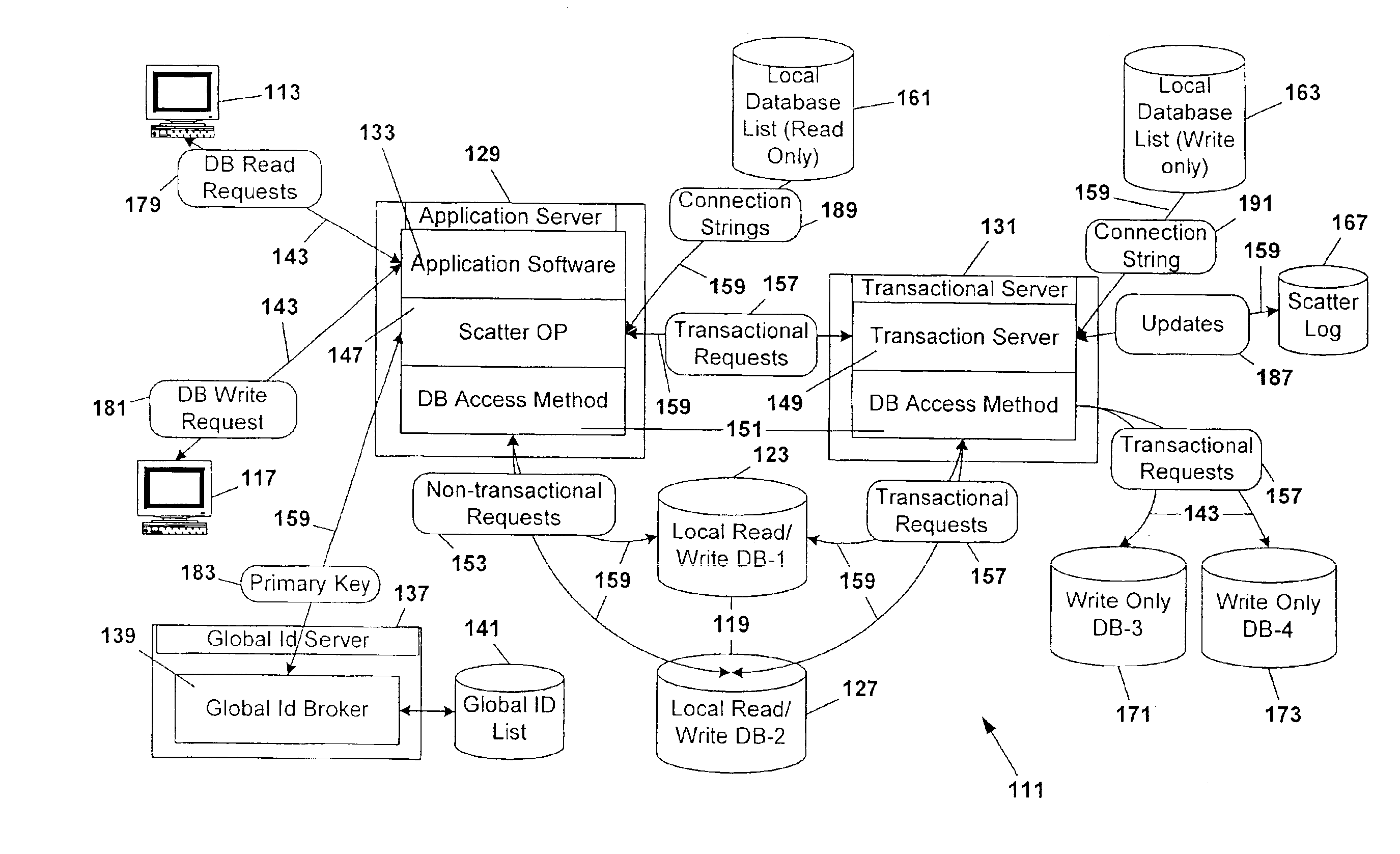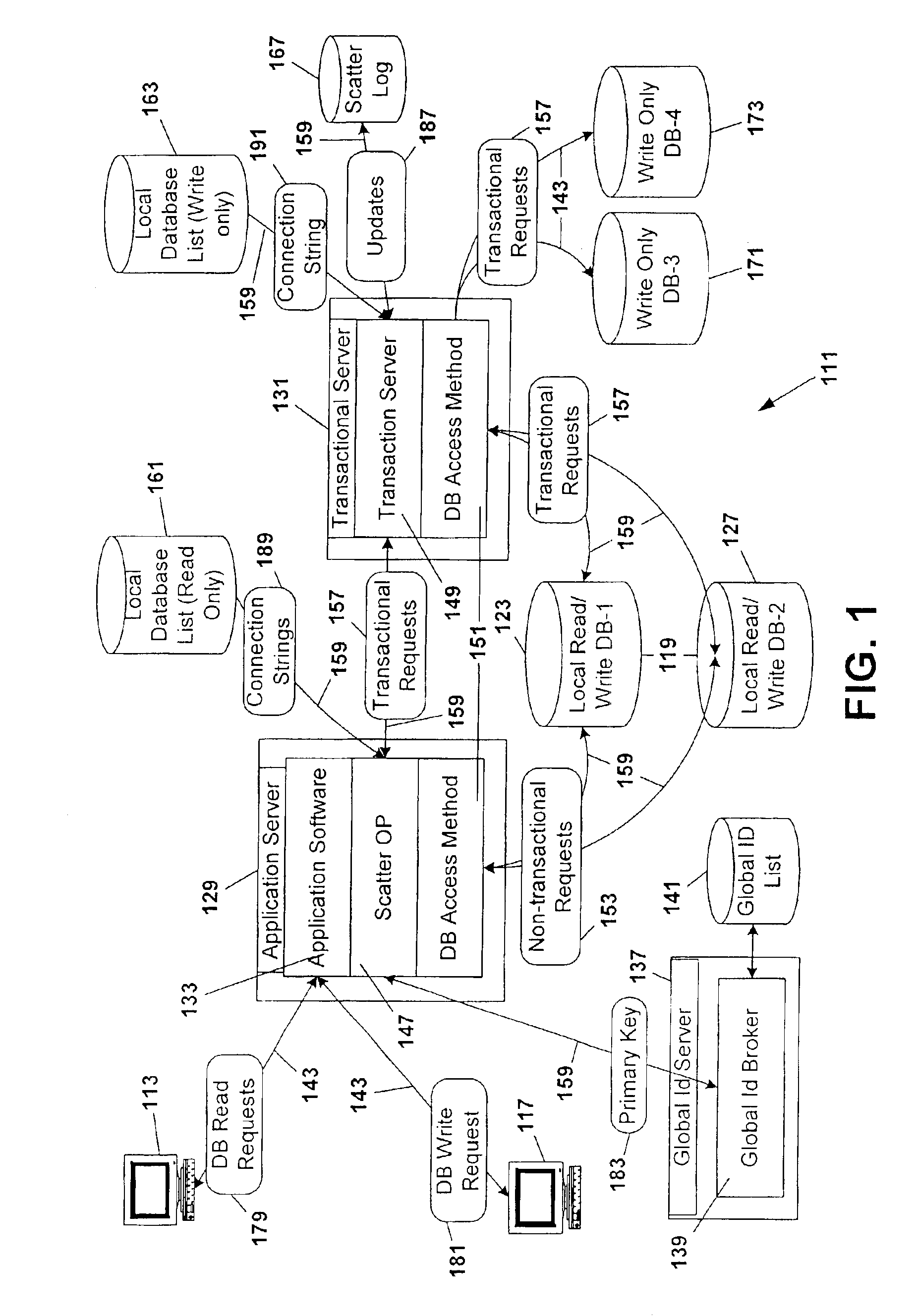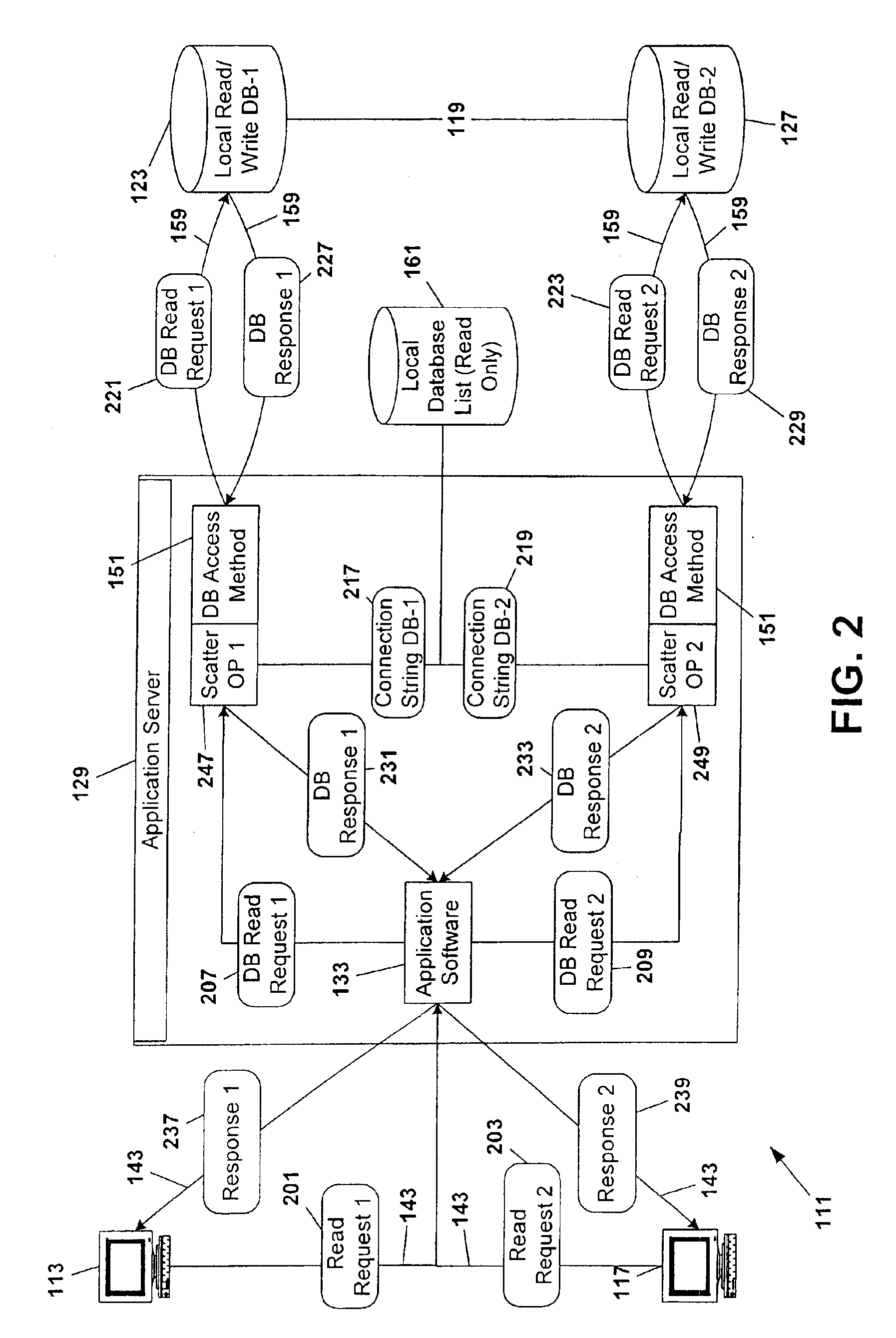Database scattering system
a database and scattering technology, applied in the field of methods and systems, can solve the problems of speed, and inability to achieve initial parameters currently desired, and achieve the effect of substantial identicalness
- Summary
- Abstract
- Description
- Claims
- Application Information
AI Technical Summary
Benefits of technology
Problems solved by technology
Method used
Image
Examples
embodiment
Preferred Embodiment
[0055]With the intention of enabling the present invention to be more readily understood by those skilled in the art, while at the same time disclosing the advantages that are afforded by the present invention, the following description is subdivided to provide an overview of the primary components giving rise to a preferred embodiment of the present invention (the Transaction Server, ScatterOp, Scatter Log, Global ID Broker, and Administration System). Within each subsection of description reference is made by title to other system components when and as necessary to assist in understanding system inter-relationships.
[0056]Following the description of each sub-component and an identification of the pathways of communication between components, a description of the interaction of the components in functional application as taught by the present invention is provided.
[0057]A fundamental principle as taught by the present invention rests upon the premise that multi...
PUM
 Login to View More
Login to View More Abstract
Description
Claims
Application Information
 Login to View More
Login to View More - R&D
- Intellectual Property
- Life Sciences
- Materials
- Tech Scout
- Unparalleled Data Quality
- Higher Quality Content
- 60% Fewer Hallucinations
Browse by: Latest US Patents, China's latest patents, Technical Efficacy Thesaurus, Application Domain, Technology Topic, Popular Technical Reports.
© 2025 PatSnap. All rights reserved.Legal|Privacy policy|Modern Slavery Act Transparency Statement|Sitemap|About US| Contact US: help@patsnap.com



